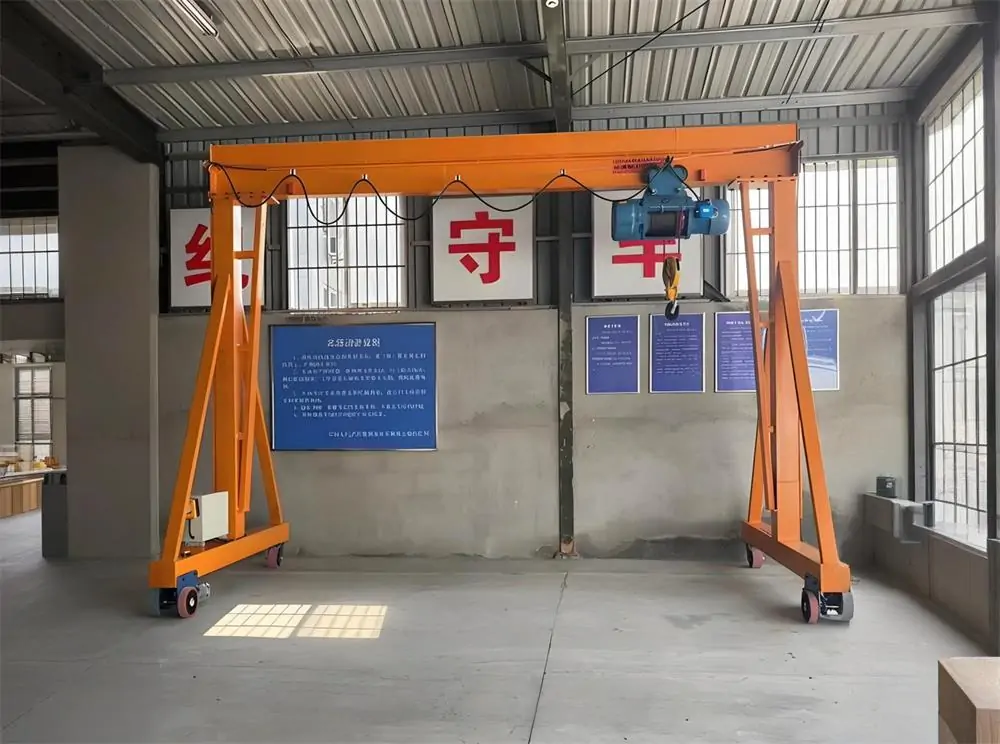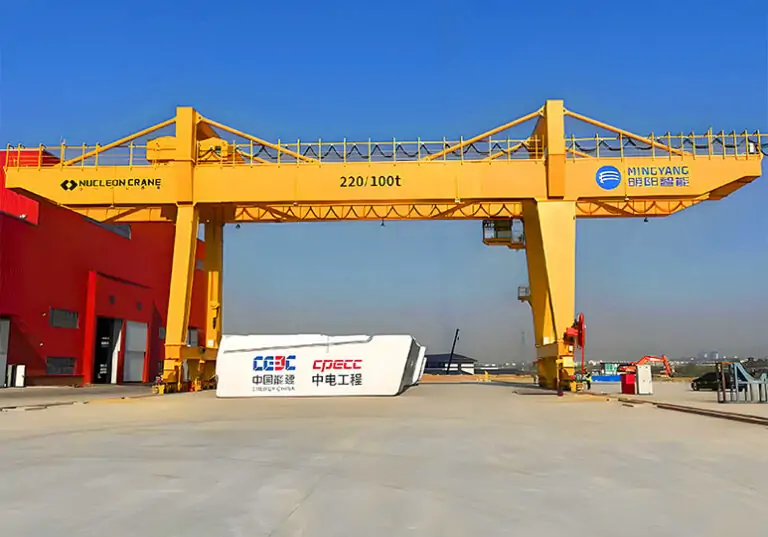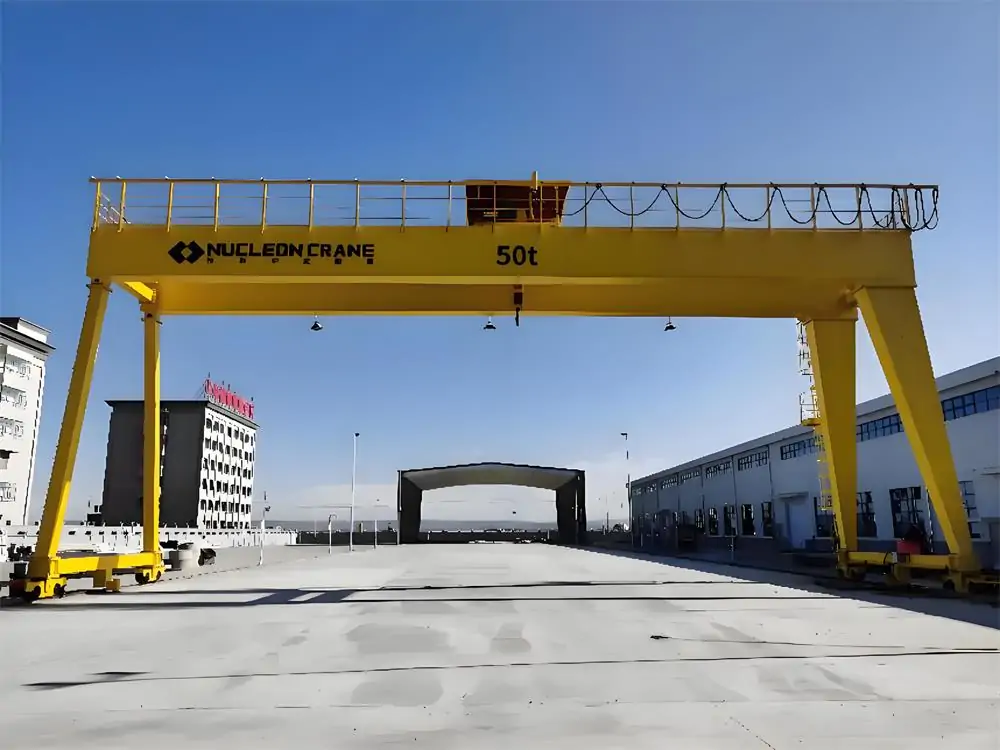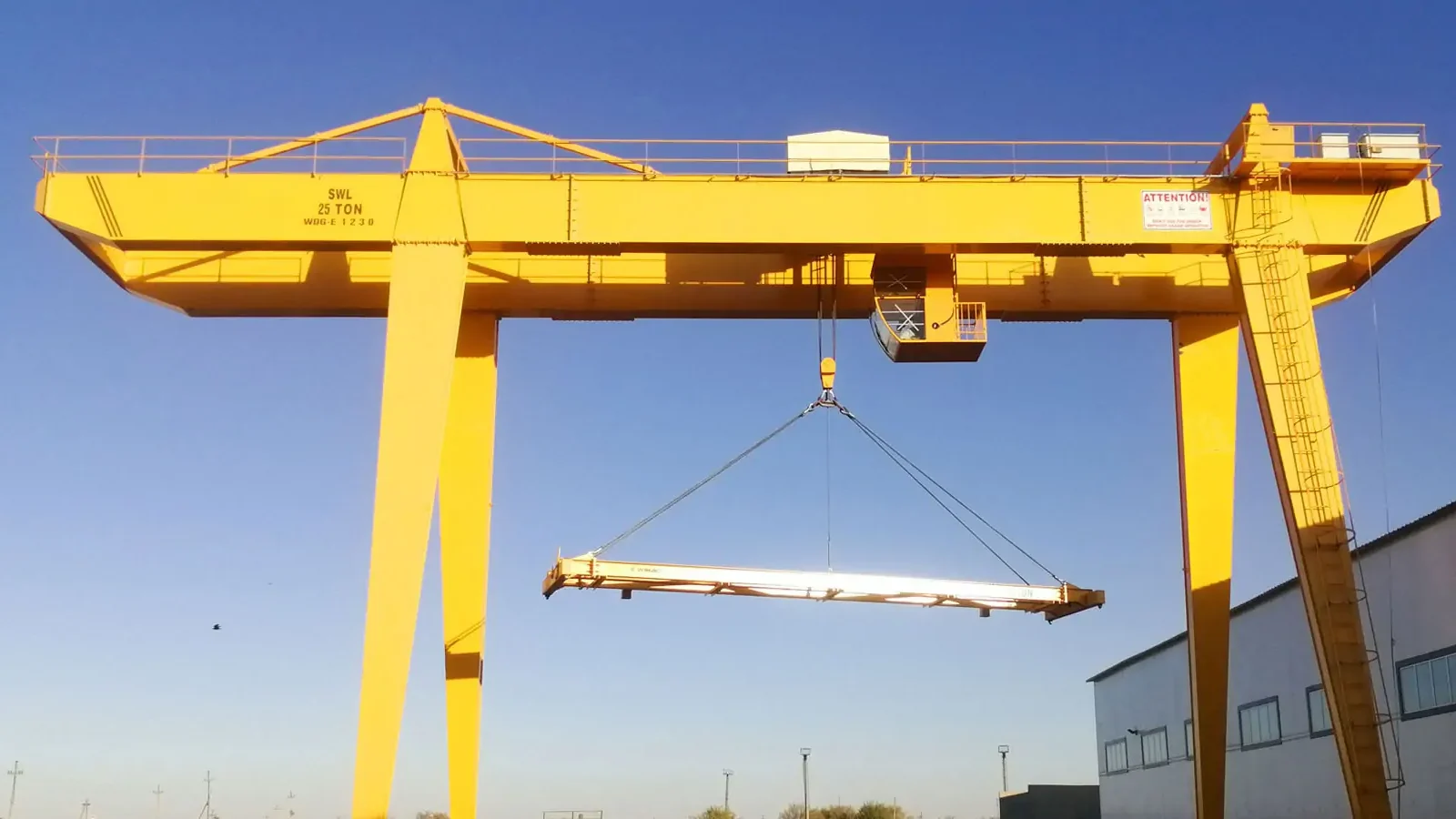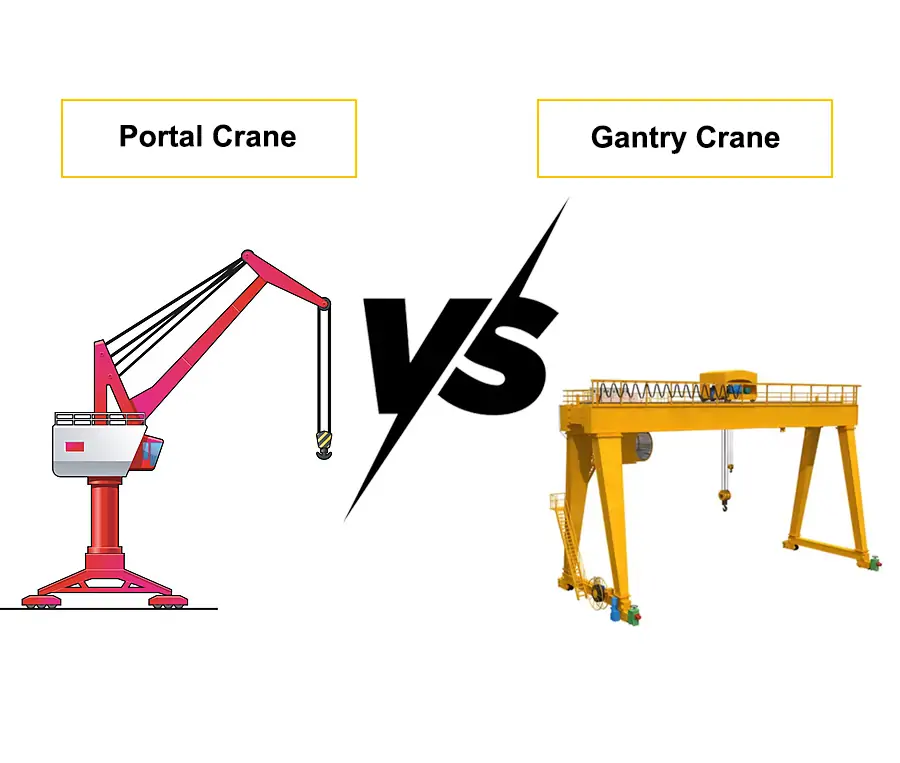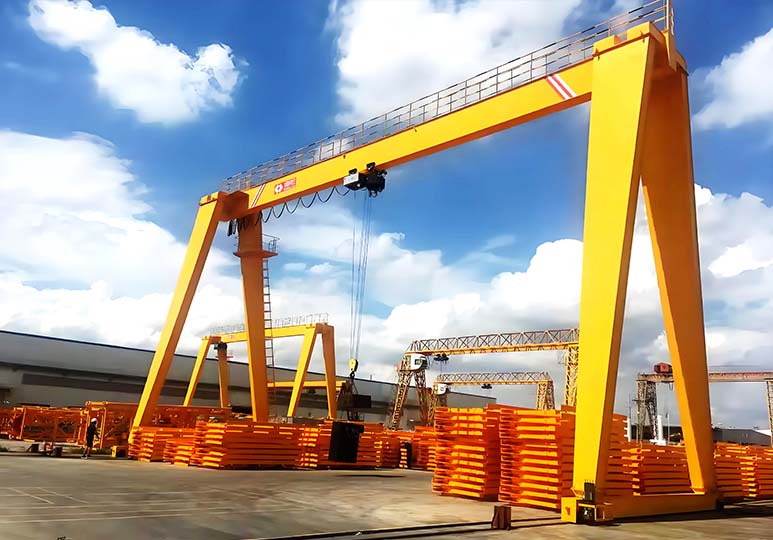10-ton and 20-ton gantry cranes have different load capacities and are suitable for carrying different cargoes, resulting in a variety of crane types with different designs and structures. This article will provide a detailed analysis of these two types of equipment from three perspectives: type distinction , core differences, and selection factors.
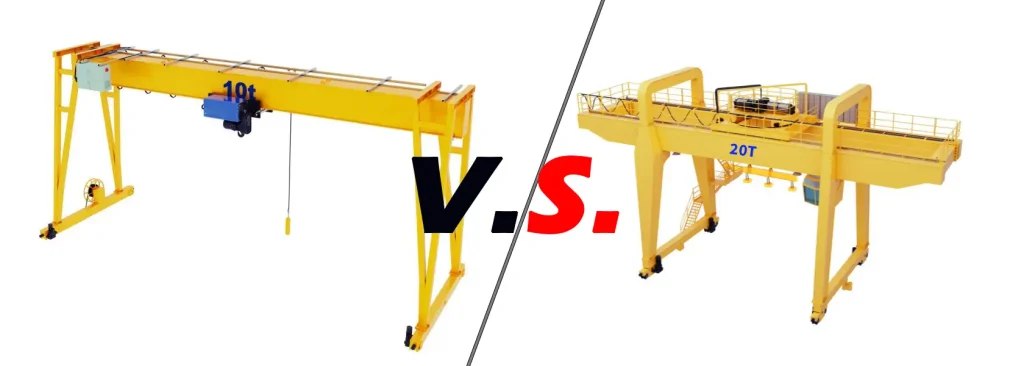
10-Ton Gantry Crane
Because 10-ton gantry cranes have relatively low load requirements, their structural designs can be more diverse. 10-ton gantry cranes can use different types of cranes to meet different operating environments and functional requirements. Using specialized cranes can more efficiently address specific problems .
Single-girder gantry cranes:These are the mainstream type of 10-ton gantry crane. Consisting of a single main girder connected by two outriggers, single-girder gantry cranes offer a simple structure, low manufacturing costs, and minimal installation requirements. They also offer low energy consumption and ease of operation. They are widely used in light industrial manufacturing, assembly workshops, and warehousing and logistics, efficiently completing daily tasks such as pallet loading and unloading and handling mechanical parts.
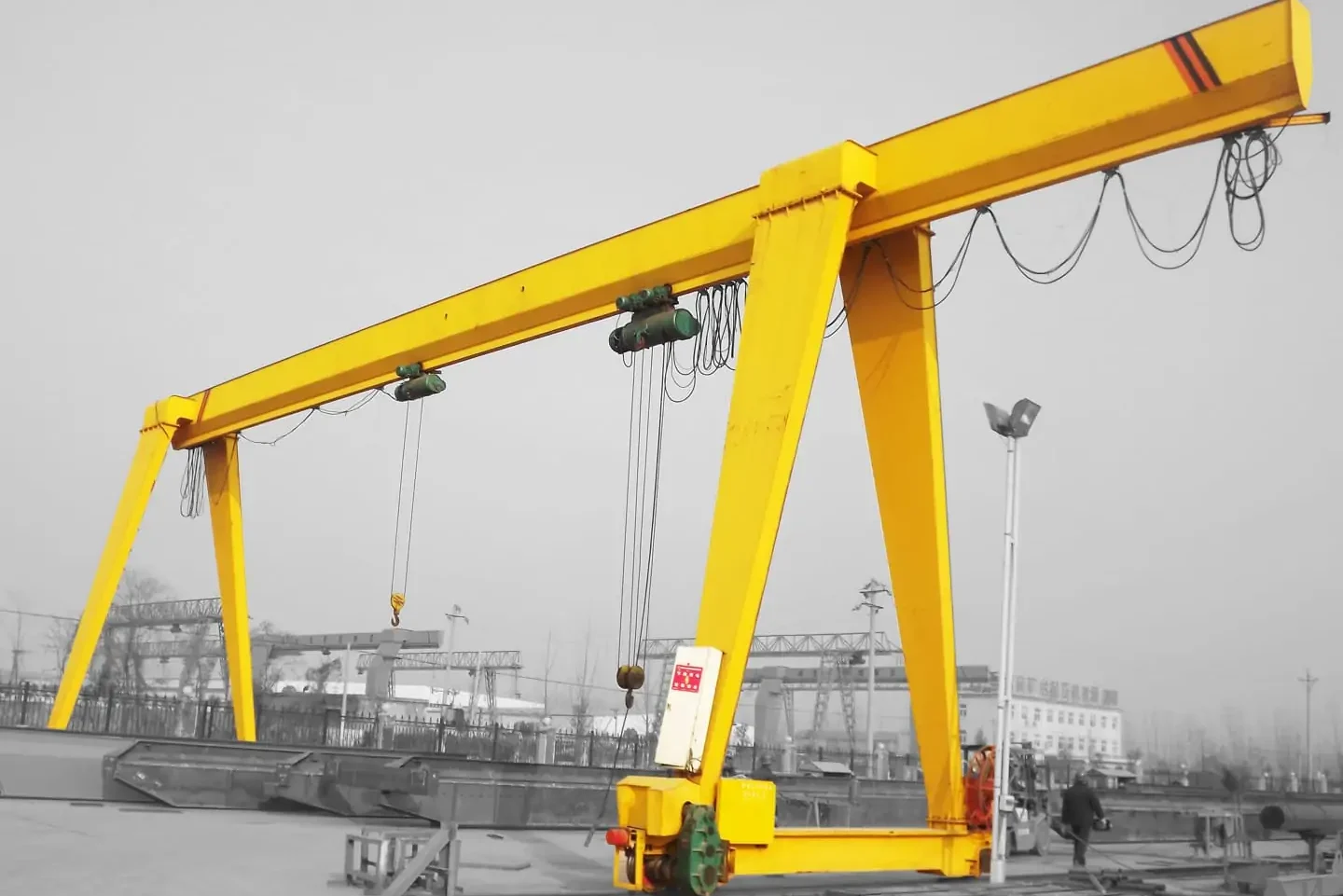
Semi-gantry cranes : One end of a semi-gantry crane relies on outriggers to move on ground tracks, while the other end is supported by a wall or column. They are particularly suitable for narrow environments, saving ground space and reducing the cost of laying ground tracks .
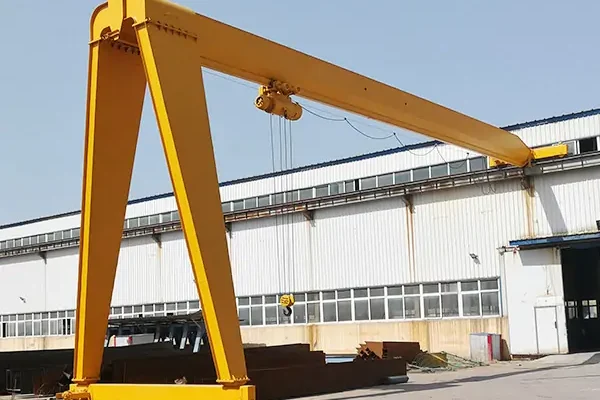
Truss gantry cranes use a truss structure as the main beam and even the outriggers , significantly reducing the weight of the equipment while ensuring a certain load-bearing capacity . Furthermore, the truss structure has excellent wind resistance , which can reduce the impact of wind in outdoor working environments such as open warehouses and construction sites.
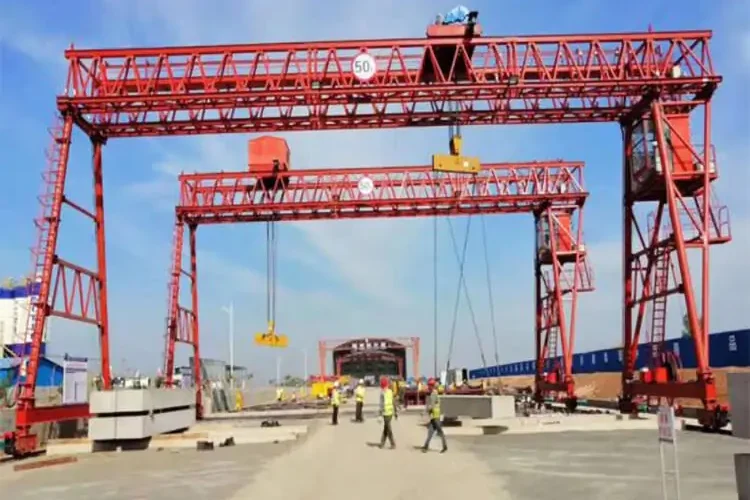
Portable gantry cranes : These small gantry cranes typically feature a foldable or easily disassembled design . Their lightweight design allows for easy transport and on-site assembly. They are ideal for temporary equipment repairs and cargo transport within small workshops.
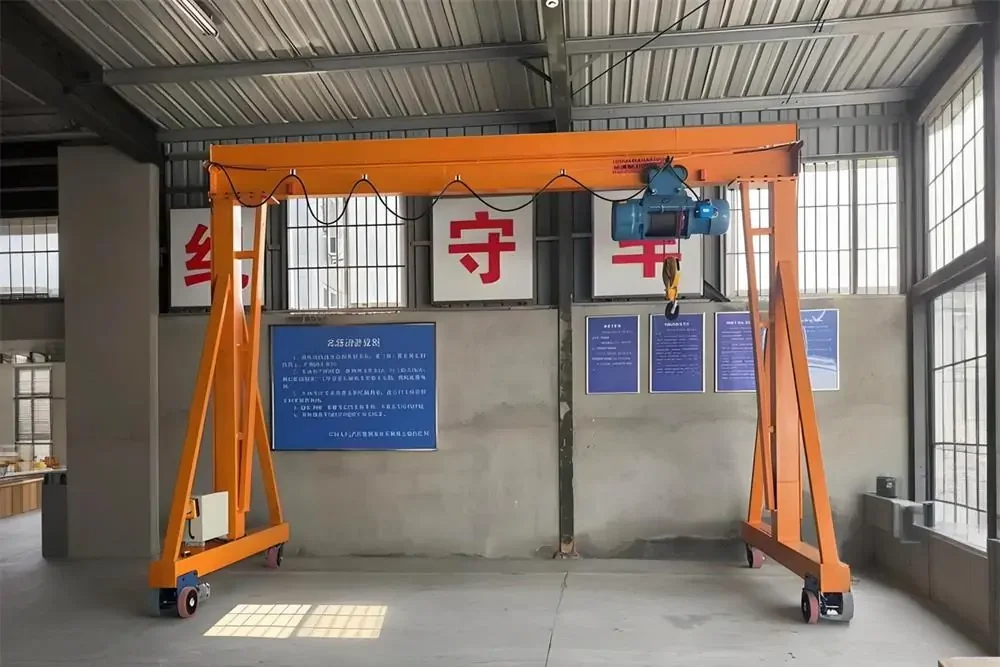
20-Ton Gantry Crane
20-ton gantry cranes need to carry a greater weight, and the requirements for structural strength and stability are much higher than those of 10-ton cranes . Therefore, double-girder gantry cranes are the mainstream type of 20-ton gantry cranes.
Double-girder gantry cranes consist of two parallel main beams connected by crossbeams to form a stable rectangular frame structure . This design gives double-girder cranes great overall rigidity and load-bearing capacity. Because they can carry heavier materials, they require more powerful hoisting and drive systems, resulting in smoother operation and high precision, minimizing vibration and deflection during material handling .
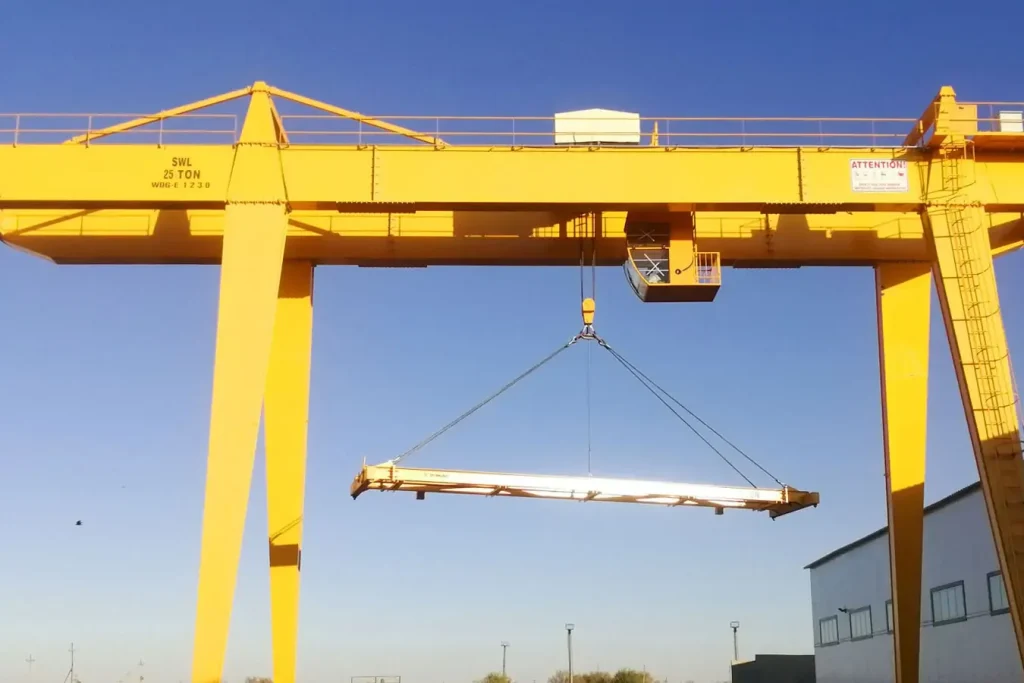
Double-girder gantry cranes primarily serve heavy industrial applications. In steel mills, 20-ton double-girder gantry cranes can handle heavy steel billets and coils . In automotive production plants , they assist in the assembly and lifting of large vehicle components . In large ports and shipyards, 20-ton double-girder gantry cranes are excellent equipment for loading and unloading containers and ship sections.
The double-beam design also allows the crane to have a larger lifting height and operating range, making it easier to install auxiliary devices such as grabs and electromagnetic suction cups.
Main Differences Between 10-Ton and 20-Ton Gantry Cranes
Besides their classification, 10-Ton and 20-Ton gantry cranes also differ significantly in structure, cost, installation, and applicable scenarios.
Structural Features: 10-Ton gantry cranes are lighter overall and relatively simple in construction. For example, single-girder cranes require only a single main girder, and portable cranes can even be quickly folded and disassembled. In contrast, 20-Ton gantry cranes, to carry heavy loads, must utilize a double-girder frame, resulting in a larger, more robust structure and a significantly heavier weight than 10-Ton cranes.
Manufacturing Cost: 10-Ton gantry cranes are relatively inexpensive due to their simple structure and reduced material consumption, especially single-girder and portable cranes, offering excellent value for money. 20-Ton gantry cranes require more steel, which is stronger, and also require high-power key components.
Installation Requirements: 10-Ton gantry cranes require minimal foundation requirements, requiring only leveling the ground and laying simple tracks for installation. Portable cranes do not even require a fixed foundation. 20-ton gantry cranes require a sturdy, hard surface to withstand the weight and load pressure of the equipment. Installation also requires a professional team for commissioning, making the overall installation process more complex and time-consuming.
Application Scenarios: 10-ton gantry cranes primarily serve light-duty operations such as light manufacturing, warehousing and logistics, and small equipment repair. 20-ton gantry cranes are suitable for heavy-duty industrial applications, handling heavy loads in steelmaking, heavy machinery manufacturing, and port shipping.
Factors to consider when choosing a model
When choosing between 10-ton and 20-ton gantry cranes, it is necessary to identify key factors and make selection decisions based on actual operational needs to ensure that the equipment functions match the scenario requirements .
Load capacity : The lifting capacity is the basis for selection . Prioritize determining the typical weight of materials handled daily and the maximum weight for occasional handling . If daily loads are typically between 1-8 tons, with occasional peaks of up to 10 tons, a 10-ton gantry crane will suffice. If regular loads reach 15-20 tons, or if heavy materials approaching 20 tons need to be frequently handled, a 20-ton gantry crane should be selected. In either case, a safety margin should be reserved to prevent wear and tear from prolonged full-load operation.
Frequency and type of lifting tasks : Frequent and heavy load tasks are better suited to 20-ton gantry cranes, which have a more stable overall structure and superior capacity. Lighter material handling is more suitable for 10-ton gantry cranes, which are more flexible and easy to use.
Worksite conditions : For confined spaces (such as workshops and small warehouses), a 10-ton gantry crane is typically more compact and simple, saving space . For temporary outdoor work, a 10-ton gantry crane is more convenient to deploy . For heavy , fixed - position work in open areas , a 20-ton gantry crane is more suitable .
Long-term operating costs : 10-ton gantry cranes offer lower purchase and installation costs, lower ongoing energy consumption, and lower maintenance costs, making them suitable for budget-constrained or smaller operations . 20-ton gantry cranes have a higher initial investment but can handle heavy-duty operations and offer high logistics and transfer efficiency. If you plan to expand your business and increase your load capacity in the future, choosing a 20-ton crane can reduce the additional cost of equipment replacement.
Conclusion
The difference between 10-ton and 20-ton gantry cranes goes beyond simply a difference in rated tonnage. Due to their distinct designs and structures, these two cranes offer different capabilities and are suited to different workloads. When choosing between these two cranes, you should carefully consider your operational requirements. If you still have questions about the two cranes, please contact Nucleon. Simply provide us with your requirements, and our professional team will develop a cost-effective solution.


